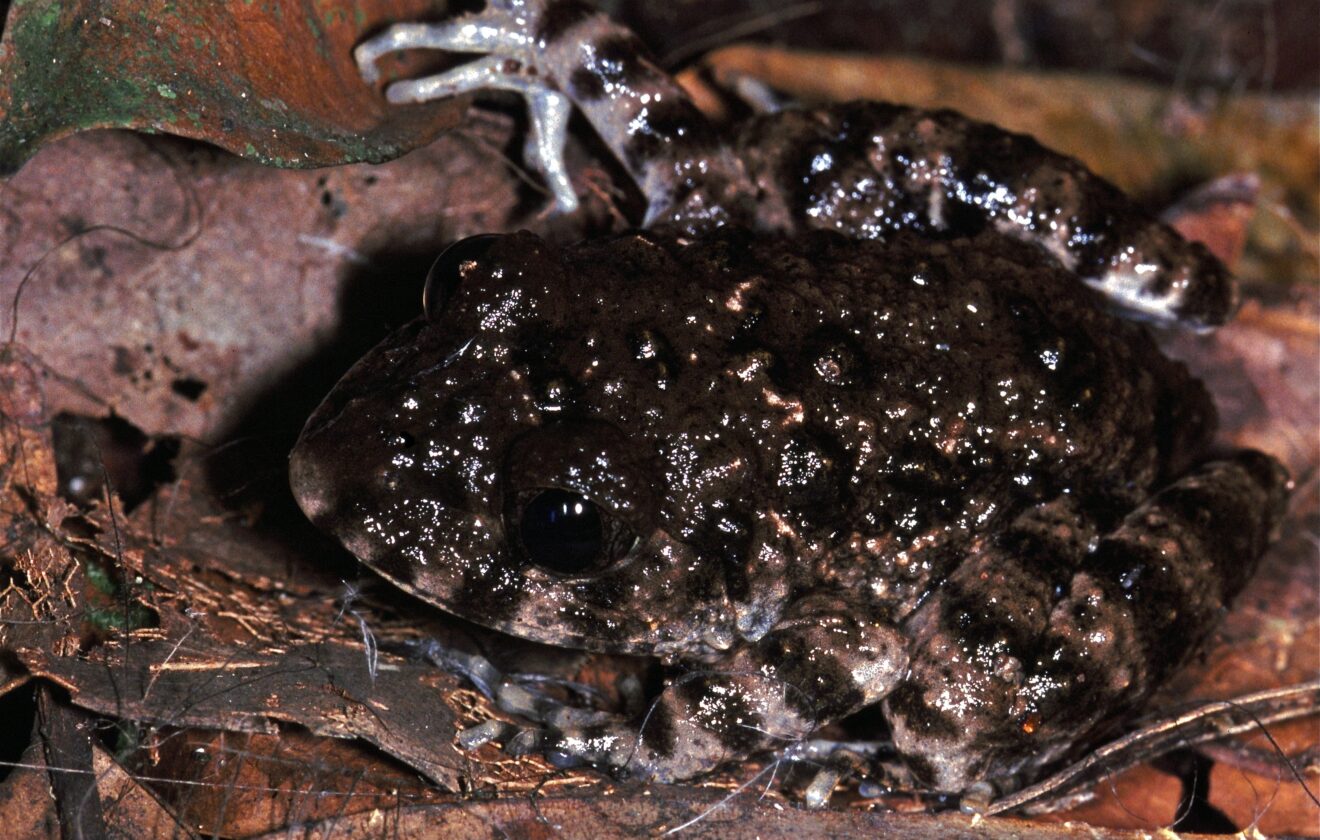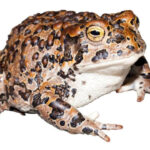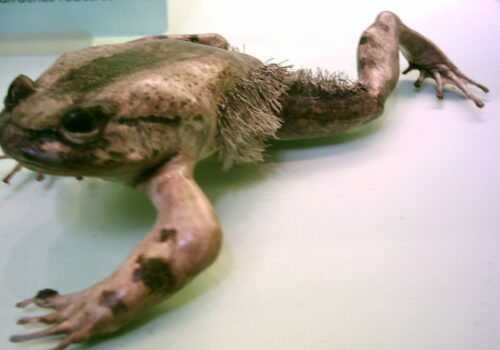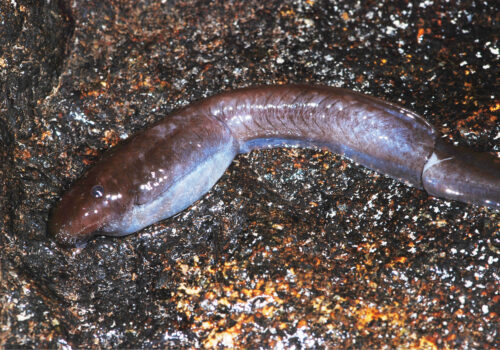- The Gaboon Forest Frog (Scotobleps gabonicus): A Hidden Jewel of Africa's Rainforests
- Taxonomy and Classification of Scotobleps gabonicus
- Natural Habitat: The Verdant Realm of the Frog
- Physical Characteristics: A Cloak Against Discovery
- Behavior and Life Cycle: Unveiling the Secret Lives of Forest Frogs
- Ecological Role: Guardians of the Forest Floor
- Threats and Conservation Status: Preserving a Magnificent Habitat
- Cultural and Scientific Significance: Nature’s Quiet Messenger
- Conclusion: Valuing an Understated Rainforest Gem
The Gaboon Forest Frog (Scotobleps gabonicus): A Hidden Jewel of Africa’s Rainforests#
Beneath the lush, emerald-shadowed canopy of Africa’s equatorial rainforests, a world of secretive creatures quietly thrives. Among the rich tapestry of life hidden within damp, moss-laden surfaces and softly whispering leaf litter, one amphibian ventures unnoticed: the Gaboon Forest Frog (Scotobleps gabonicus). With cryptically patterned skin, quiet prowess, and extraordinary adaptability, this species encapsulates the subtle mastery of survival that characterizes rainforest wildlife.
Despite its relative obscurity and the challenges of studying it in its natural habitat, Scotobleps gabonicus offers more than meets the eye. Its very invisibility—the ease with which it melts into the rainforest shadows—makes it uniquely captivating for nature enthusiasts and conservationists alike. Yet few outside a niche of herpetology experts and local observers truly know its story.
Let’s journey together, deeper into the rainforest floor, to discover the distinct ecological niche, intriguing biology, and pressing conservation needs of this remarkable yet elusive frog species.
Taxonomy and Classification of Scotobleps gabonicus#
Every organism carries within it a heritage that tells the story of its evolutionary journey. The Gaboon Forest Frog, scientifically classified as Scotobleps gabonicus, belongs to the family Arthroleptidae, a diverse assemblage of frogs native mostly to Sub-Saharan Africa. Within this vast family, “Arthroleptidae” scenes like an intricate botanical network—each genus leafing out to reveal colorful stories of adaptation and resilience.
Scotobleps gabonicus is currently recognized as the sole representative of its genus Scotobleps. This unique taxonomic placement emphasizes its evolutionary uniqueness. Discovered and described as early as 1900, this species kept its secrets closely guarded within its forest homes, rarely catching the attention of broader public scientific conversations until recently.
Natural Habitat: The Verdant Realm of the Frog#
Geographic Distribution#
The Gaboon Forest Frog is native exclusively to Central Africa, prominently within the lush rainforests of Gabon, Equatorial Guinea, Cameroon, and the Republic of Congo. These regions, characterized by warm, humid climates and dense foliage, offer an ideal sanctuary for Scotobleps gabonicus. While precise population densities and exact boundaries remain difficult to define due to its elusive habits, observations confirm their presence predominantly in undisturbed pristine rainforest habitats.
Habitat Preferences and Microhabitats#
Beneath towering trees, within moist leaf litter and damp logs blanketed by moss, the Gaboon Forest Frog lives an existence far removed from humanity’s intrusive gaze. Its preference for undisturbed, healthy forest habitat makes it a valuable indicator of environmental health. The species depends on permanent moisture and humidity provided by the persistent canopy coverage. Streams, seepages, and areas of slow-moving water also play a critical supporting role in the frog’s reproductive cycle, providing nurseries necessary for tadpole development.
These specialized microhabitats reveal important clues. Scotobleps gabonicus is more than merely adapted to its environment—it is a vivid reflection of it. A healthy population of these frogs indirectly attests to the overall vitality of their rainforest home.
Physical Characteristics: A Cloak Against Discovery#
At first sight—or rather, upon exhaustive searching—the Gaboon Forest Frog presents an intriguing physical profile. Adults vary modestly in size, typically reaching between 35 to 50 millimeters in length. The most striking aspect, however, lies in their coloration and markings. Their delicately patterned skin blends seamlessly with the wet bark, leaves, and fungal-covered logs that litter their rainforest floor—a prime example of effective camouflage.
Predominantly earthy hues—subtle browns, grays, greens—intermix with irregularly patterned darker blotches, and flecks of lighter coloration breaking up their silhouette effectively. Their somewhat flattened body form allows them to lie concealed amidst leaf margins, a true marvel of evolutionary ingenuity.
Notably, they possess relatively large eyes adapted to the dimly lit understory habitat, enabling improved nocturnal vision to hunt prey and avoid predators. Their limbs, elongated and powerful, provide both strength and agility necessary for precise leaps and stealthy movement across damp substrates.
Behavior and Life Cycle: Unveiling the Secret Lives of Forest Frogs#
Feeding Habits#
Though the Gaboon Forest Frog maintains a low profile, it notably plays the role of impressive predator within its microhabitat. A nocturnal hunter, it emerges in the cover of darkness, scanning with keen eyes and powerful reflexes. Their diet primarily consists of small forest invertebrates—ants, beetles, spiders, and tiny crickets. Quick, precise movements allow the frog to capture prey almost instantly, a potent display of predatory efficiency within the rainforest floor ecosystem.
Reproduction and Parental Care#
Scotobleps gabonicus reproductive behaviors unfold quietly within the protective environment of slow-moving waterways or flooded forest depressions. During rainy periods, males voice quiet, melodious calls—soft chirps blending with the sounds of trickling rainwater and dripping leaves. Females select breeding partners based on this subtle chorus, ensuring genetic diversity and continuing population stability.
After mating, their eggs are carefully hidden among submerged vegetation, providing critical protection from potential predators. Unlike some charismatic amphibians exhibiting extensive parental care, Scotobleps gabonicus leaves their offspring to develop independently. Nonetheless, strategic egg deposition in outer-reach aquatic microhabitats significantly increases offspring survival rates, shielding them from many terrestrial predators.
Ecological Role: Guardians of the Forest Floor#
The Gaboon Forest Frog plays a pivotal, if unassuming, role in its ecosystem. Their stable invertebrate predation helps maintain balanced pest populations, indirectly supporting plant growth and forest health. Conversely, as prey, they sustain larger predators, including small mammals, snakes, and forest birds. Each frog’s life forms part of the intricate ecological web, linking together countless interconnected lives in rainforest biodiversity.
Appreciating Scotobleps gabonicus also means understanding the balance of this delicate dance, acknowledging the interconnectedness at every rainforest stratum, keeping the rainforest robust and vital through the frog’s quiet, persistent contributions.
Threats and Conservation Status: Preserving a Magnificent Habitat#
Due to its secretive nature, precise data regarding its population trends can be challenging to acquire. However, ongoing deforestation in Central Africa—primarily driven by logging, agriculture expansion, and mining—clearly poses a significant threat. Such habitat fragmentation and environmental degradation directly jeopardize the frog’s vital habitat needs, thus undermining population stability.
Currently, Scotobleps gabonicus holds an IUCN status of Least Concern due primarily to relatively wide distribution inferred through favorable habitat availability. That said, scientists caution that continued habitat destruction could rapidly alter its conservation status, emphasizing the importance of proactive conservation strategies and vigilant monitoring.
Cultural and Scientific Significance: Nature’s Quiet Messenger#
While this frog remains largely absent from broader cultural narratives, among local communities living harmoniously with Central African rainforests, frogs like Scotobleps gabonicus represent hidden natural treasures. Their faint calls during seasonal rains are woven seamlessly into local folklore and traditions that honor forests and their mysterious inhabitants.
Scientifically, Scotobleps gabonicus and related frogs serve as critical bioindicators. Detailed scientific examination of population health contributes directly toward understanding broader rainforest ecosystem vitality. Furthermore, amphibians are focal species in researching environmental changes, contaminants, and climate fluctuations due to their sensitive, permeable skin and precise habitat requirements.
Conclusion: Valuing an Understated Rainforest Gem#
The Gaboon Forest Frog’s subtle mastery—its stealthy camouflage, quiet movements, and understated yet essential ecological roles—deserve greater recognition. Scotobleps gabonicus teaches important lessons on the interconnectedness of life and highlights pressing conservation concerns that impact entire ecosystems.
No longer should these quiet creatures slip unnoticed beneath our radar. By advocating for rainforest conservation, supporting scientific monitoring, and educating ourselves about such enigmatic amphibians, each of us contributes to safeguarding their future—and ours.
Together, let’s amplify efforts to preserve these lively ecosystems. Exploring and protecting remarkable species such as Scotobleps gabonicus means ensuring a thriving rainforest—all it requires is our mindful care.














